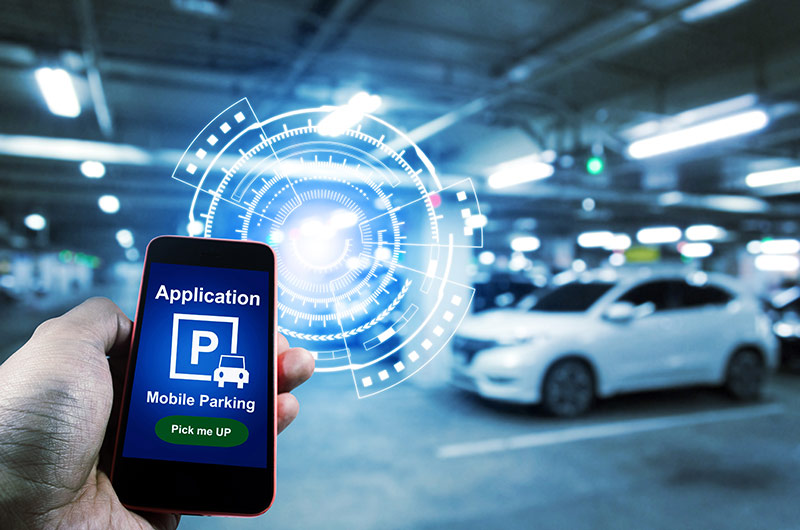Smart City and the IoT revolution: two urban transport systems towards a sustainable future
We often hear talk of Smart Cities and the IoT revolution: IoT is the abbreviation for the Internet of Things and indicates the use of the web with regard to objects and places, enabling them to acquire their own digital identity. The term IoT revolution is used precisely to emphasise the fact that this technological innovation aims to create new services that can be used by users in a more sustainable, greener, smarter way. Objects and places, through their interconnected communication, attain a unique ‘intelligence,’ enabling them to actively engage both within the network and in our everyday lives.
As far as the IoT revolution is concerned, it is certainly the Smart City that contributes most actively to creating a sustainable and efficient future through innovative mobility and urban transport systems, innovative parking systems and innovative street lighting systems. In short, the transition to a Smart City will create more efficient, safer, more inclusive, more connected and more sustainable cities. But let’s see what exactly a Smart City is.
IoT solutions: What is a Smart City?
As the definition itself suggests, a Smart City is an urban area within which digital technologies can optimise and improve services and infrastructures, thus creating considerable added value for users and citizens.
IoT technology within a Smart City works to improve everything related to public administration: street lighting, waste management, transport, energy distribution, information and communication channels, and street and green maintenance. In essence, Smart Cities aim proactively to create sustainable and innovative environments to raise the quality of life for those who live there.
IoT technology within a Smart City
IoT technology applied in the development of Smart Cities uses actuators, sensors, central brokerage systems that manage a large number of algorithms, microservices, backend systems with a user interface, hardware and/or software connectors, innovative multi-protocol network technologies such as LoRaWAN, IoT mobile network technologies for M2M (machine-to-machine) connectivity, and web and mobile apps that make it easy for citizens to access and use all functionalities. These advanced and smart technologies make it easy to manage a Smart City.
Highlights of a Smart City
Enhancing a citizen’s quality of life involves providing intelligent, connected systems that optimise their daily experiences.Let us summarise the highlights of a Smart City:
- Smart People: involvement and inclusion of citizens themselves.
- Smart Governance: use of technological systems provided by the public administration aimed at centralising human capital, environmental resources, and land assets.
- Smart Economy: technological innovation to increase productivity and labour supply.
- Smart Living: IoT systems to ensure comfort and well-being in terms of health, education, safety and training.
- Smart Mobility: intelligent mobility solutions to reduce costs and environmental impact and to increase energy savings.
Smart parking

Optimising parking and traffic systems is certainly one of the most ambitious goals of a Smart City. Moving smartly and without traffic delays enables the development of productive and economic activities and significantly reduces the emission of poisonous gases through the reduced circulation of polluting vehicles. Smart car parks within a Smart City are the perfect result of combining functionality, energy efficiency, cost optimisation, automation and an inclusive approach and significantly reducing fuel consumption, CO2 emissions, pollutants and, above all, stress.
How to manage waste in Smart Cities
Another challenge to be pursued in developing a Smart City is managing urban and non-urban waste. IoT can manage the fill level of public bins and litter bins, monitoring them to signal when they need to be emptied or cleaned and thus significantly reducing the use of resources needed to keep public areas free of waste.
The benefits of smart technology for waste monitoring are many: first of all, more efficient waste management and, secondly, seeing empty, clean and tidy waste bins (resulting in reduced maintenance and cleaning costs) psychologically induces citizens to dispose of their rubbish correctly and not to throw it into the streets, reinforcing a sense of civic responsibility in the community.
Intelligent wastewater management
In the microcosm of a Smart City, everything must be managed intelligently and efficiently: IoT sensors can also be useful for wastewater management and freshwater demand; they prevent and detect the presence of harmful chemicals and sewage of various kinds.
Moreover, IoT technology can also intervene to reduce water wastage. Indeed, when it rains, precipitation causes sewer systems to overflow and, thus, wastewater. Monitoring this water surge through IoT sensors can detect overflows in real-time and take action to reduce water wastage.
The Benefits of Smart Mobility
Innovative Smart Mobility technology systems offer significant advantages within a Smart City. Here are the main ones.
Sustainable transport and mobility focus on intelligent systems that monitor the flow of cars and people, air quality, parking availability and the management of emergencies and accidents of all kinds. Smart Mobility also includes the management of LTZs (Limited Traffic Zones), public transport (buses, trains and private transport) and also addresses the tourism sector by increasing and improving the various related services. The various itineraries, whether cultural, architectural or gastronomic, can be easily consulted via various devices. Thus, a further advantage is also in terms of economic growth and employment opportunities.
In the not-too-distant future, the IoT revolution will work alongside projects related to the creation of more and more Smart Cities: The vast and crucial benefits in terms of efficiency and citizen well-being make it unwise to overlook the tremendous opportunities offered by the world of telecommunications and digital systems.
The Internet is used globally by everyone and for everything, and harnessing it to create more liveable, organised, efficient and sustainable environments is a must not only for the inhabitants of Smart Cities but also for all of us and future generations.
CONTACTS
Melita.io,
Triq il-Merghat, Zone 1, Central Business District, Birkirkara, CBD1020 Malta
www.melita.io
Melita’s official IoT services page on Linkedin: https://www.linkedin.com/showcase/melita.io
